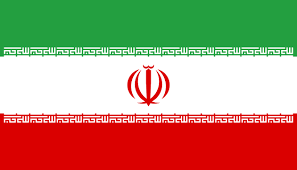Language/Iranian-persian/Culture/Lesson-17:-Persian-cinema-and-music
 Հայերէն
Հայերէն Български език
Български език 官话
官话 官話
官話 Hrvatski jezik
Hrvatski jezik Český jazyk
Český jazyk Nederlands
Nederlands English
English Suomen kieli
Suomen kieli Français
Français Deutsch
Deutsch עברית
עברית हिन्दी
हिन्दी Magyar
Magyar Bahasa Indonesia
Bahasa Indonesia Italiano
Italiano 日本語
日本語 Қазақ тілі
Қазақ тілі 한국어
한국어 Lietuvių kalba
Lietuvių kalba Νέα Ελληνικά
Νέα Ελληνικά Şimali Azərbaycanlılar
Şimali Azərbaycanlılar Język polski
Język polski Português
Português Limba Română
Limba Română Русский язык
Русский язык Српски
Српски Español
Español العربية القياسية
العربية القياسية Svenska
Svenska Wikang Tagalog
Wikang Tagalog தமிழ்
தமிழ் ภาษาไทย
ภาษาไทย Türkçe
Türkçe Українська мова
Українська мова Urdu
Urdu Tiếng Việt
Tiếng Việt
As a Persian language teacher, I cannot overstate the importance of cinema and music in Iranian culture. For a language learner, immersing oneself in the rich history and variety of Persian music and films is not only enjoyable, it also provides valuable insights into the social and cultural contexts of Iran. In this lesson, we will explore the most prominent figures and trends in Persian cinema and music.
Persian cinema
Persian cinema is a relatively new art form, having emerged in the early 20th century. However, it has quickly become one of the most important cultural exports of the Iranian society. Iran is the most prolific producer of films in the Middle East and a hub of creative and innovative filmmakers, who have been recognized internationally.
Early years
In the early years of the Iranian film industry, movies were mostly melodramatic and represented the popular Iranian culture of the time. Abbas Shabaviz, Esmail Koushan, and Fereydoun Gole were some of the most prominent figures of the era. During this period, Persian cinema became a tool of national identity and social engineering, as the pre-revolutionary Iran sought to modernize itself.
Pre-revolutionary period
The era leading up to the 1979 revolution was marked by censorship and restrictions on artistic freedom. However, this period also saw the emergence of a new generation of filmmakers who began to challenge the status quo. Directors like Bahram Beyzai, Abbas Kiarostami, and Jafar Panahi became the pioneers of the Iranian New Wave, which was characterized by its subtlety, realism and social commentary. The cinema of the pre-revolutionary era reflected the most pressing issues of the society, such as poverty, corruption, and moral decay.
Contemporary period
After the revolution, the Iranian cinema underwent a period of redefinition and profound transformation. Despite the challenges of censorship and funding limitations, filmmakers continued to produce impressive works that won them international recognition. Directors like Asghar Farhadi, Majid Majidi, and Samira Makhmalbaf are known for their poignant and humanistic portrayals of Iranian life, while exploring universal themes such as love, faith, and family.
One of the most striking features of Persian cinema is the profound appreciation of beauty and artistry. This approach is evident in the breathtaking cinematography and haunting music that complement the storytelling and character development. In recent years, Iranian movies have won numerous international awards and have become a respected part of the global cinematic landscape.
Persian music
Persian music has a rich and complex history that spans several millennia. It is one of the oldest and most distinguished musical traditions in the world and has influenced a wide range of musical styles and genres.
Classical music
The classical Persian music, also known as the Radif, is a system of melodic schemes and improvisational modes that has been passed on through generations of master musicians. Persian classical music is characterized by its unique microtonal system, complex rhythms, and intricate melodies. Some of the most celebrated classical musicians of Iran are Mohammad Reza Shajarian, Parviz Meshkatian, and Ali Akbar Khan.
Pop music
Since the 1950s, Persian pop music has undergone a series of changes and evolutions. It has incorporated elements of Western pop music and has been influenced by the contemporary social and cultural trends of Iran. Today, Persian pop music is a vibrant and diverse genre that reflects the aspirations, struggles, and dreams of Iranian youth. Some of the most popular pop singers in Iran are Googoosh, Ebi, and Mansour.
Folk music
Persian folk music has a rich and varied expression, with a wide range of regional and local characteristics. Many of the folk songs and dances have their roots in the ancient traditions of Persia, and they are infused with vivid imagery and poetic language. Persian folk music is an important part of Iranian cultural identity and is cherished by people of all ages and backgrounds.
In conclusion, Persian cinema and music reflect the rich and diverse heritage of Iranian culture. They provide an opportunity to explore the social, political, and economic realities of Iran, as well as the beauty and complexity of the Persian language. As a language learner, immersing oneself in Persian music and films is an excellent way to deepen one's understanding of the language and the people who speak it.
Sources


